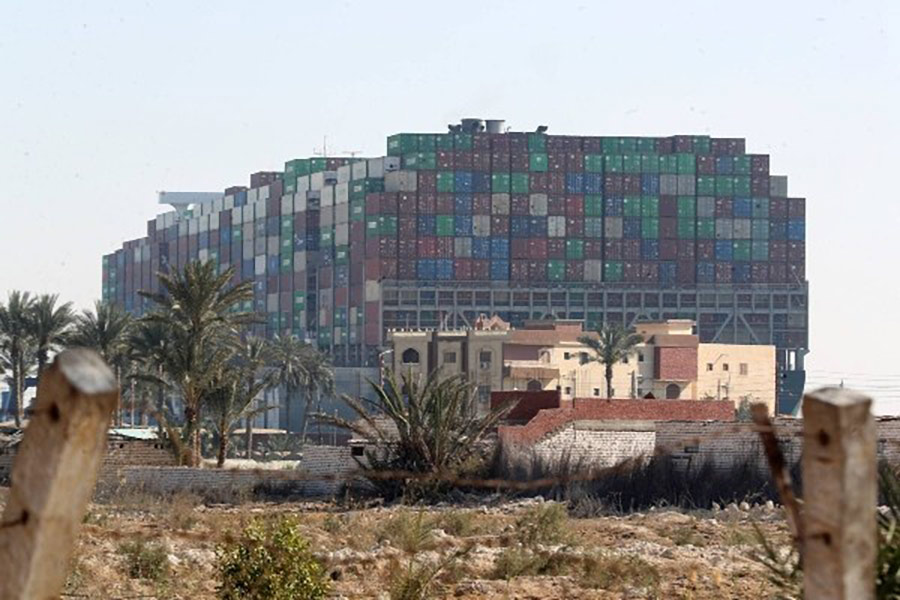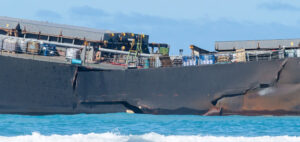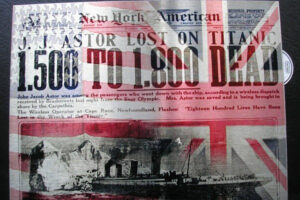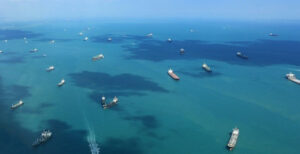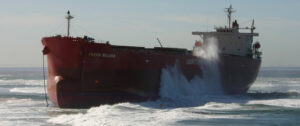No sooner than the massive container vessel Ever Given had been blown at an angle blocking the Suez Canal, were we informed by sub-editors adding their clear descriptive comparisons.
A ship the size of the Empire State Building on its side; vessel’s length about the height of the Eifel Tower; longer than four football pitches… You get the picture.
Certainly, with the images of a vessel dwarfing the small town beside the canal there was little left to imagination. From Ismalia and nearby villages it appeared several storeys higher.
In the UK, we would sooner describe an arctic forest fire as twice the size of Wales, Why? Because it’s there – Wales is local to us and more familiar. Immediately we can scale an area up or down. Hearing of the fire spanning several Siberian provinces leaves us wondering – with that egg-timer puzzlement – and we miss the next point.
So it is with a huge ship. A car carrier or cruise liner is easily as long as five Olympic swimming pools and three London buses high. ‘Length overall’ becomes academic in the public psyche.
The description helps because your idea of a big ship may differ from mine. One person’s big might be huge to someone else …could be colossal. As we saw, it takes the canal, a bridge, or a small town as our reference point to get that visual recognition.
Go back 11 years to the Deep Water Horizon oil well disaster, and the BP rig was ‘taller than St Paul’s Cathedral,’ as a senior responder put it. The slick from the largest marine disaster in US history might well have been the size Wales, if not Wyoming… No one dealing with that could be in any doubt of the scale or the impact.
Or take a recent pollution scandal where a mound of wet wipes – the size of two tennis courts – is mistaken for a section of the Thames river bed at low tide. Shocking as it is, we are at least spared the smell – and it is a suitably suburban reference point that hammers home the sewage surface area.
Some 87 million pints of beer are understood to have been poured away by pubs in the UK during the Covid crisis – enough to fill 20 Olympic swimming pools (if not just one great bitter lake).
Comparative descriptions can be an asset, they can certainly save time, when explaining something in a brief broadcast interview where complexities are easily lost on the public. The visual helps us engage.
But beware the descriptive reference that can sooner hinder than help. I knew an aid worker who felt cool about having a birth mark the shape of Afghanistan, until her stepfather pointed out its closer match to the Isle of Wight!
Escorting journalists aboard the USS Enterprise in the English Channel, I was coming to terms with the largest thing I had set foot on. The famous carrier had a complement on the scale of a small town with some 5800 crew and air wing – and every amenity. However, in aircraft terms this one American warship could support 90 per cent of the Royal Navy’s operational aircraft, as the Daily Express was quick to point out – and print. The media make their mischief.
Principally we are trying to inform, not entertain, as we correct any error of assumption.
Through the Covid crisis, UK media has been impressed by one senior advisor. UK Deputy Chief Medical Officer, Jonathan Van-Tam, is seen as a master of the analogy with his ‘Van-Tam-isms’.
His example of a train journey to explain the progress of vaccine development:
“The train has now slowed down safely. It has now stopped in the station. And the doors have opened – that was the authorisation by the MHRA (regulatory body). What we need now is for people to get on that train and travel safely to their destinations.”
Or this analogy, describing the Covid crisis as a football game – the away team being the virus:
“It’s clear in the first half, the away team gave us an absolute battering, and what we’ve done now is it’s the 70th minute, they got a goal, and in the 70th minute we’ve now got an equaliser.
“Okay, we’ve got to hold our nerve now, see if we can get another goal and nick it. But the key thing is not to lose it, not to throw it away at this point because we’ve got a point on the board, and we’ve got the draw.”
Being able to articulate a point in a parallel theme or cultural landscape can be a plain leveller for public information being understood. Compliance often builds from a clear message.
Similarly, if a situation or procedure is complex and can be better explained briefly with something we can relate to, you can revive interest, grab an audience’s attention. An audience the size of…

